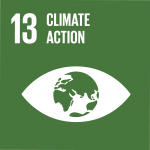Assessing climate risks and vulnerabilities is essential for adapting to climate change

May 2022 - “The rise in weather and climate extremes has led to some irreversible impacts as natural and human systems are pushed beyond their ability to adapt,” according to the IPCC 6th Assessment Report, which reiterated the stark reality of the challenges that human and natural systems face.
Our climate, ecosystems, biodiversity and human systems are more interdependent than ever, while climate change impacts every sector, system and country differently. Even within countries, there are districts or regions that experience different risks and stressors associated with climate change. Knowing where to focus resilience-building efforts in countries is a key step in the adaptation planning process.
Many countries have started to assess where they have been historically exposed to climate impacts and where they will become more exposed in the future. This activity is called a ‘Risk and Vulnerability Assessment’ and it is an important step in adaptation planning and helps inform policy makers on where to allocate resources. UNDP is working with 34 countries on their National Adaptation Plans (NAP) with funding through the Green Climate Fund Readiness Programme. Of these 34 countries, at least 31 are undertaking a ‘risk and vulnerability assessment’ and many are undertaking more than one. Overall, these 31 countries will generate at least 70 risk and vulnerability assessments by 2024 with technical support from UNDP and funding support from the Green Climate Fund’s Adaptation Planning readiness programme.
The previous IPCC AR5 report included a conceptual framework that countries followed for conducting these types of assessments. The latest IPCC AR6 report then slightly updated the definition and conceptualization of risk and vulnerability. It is important that the NAP formulation and implementation processes are both aware of the new AR6 conceptualization of risk and vulnerability – particularly its more holistic scope than in previous reports. It highlights the need to undertake ‘a process to comprehensively assess and understand risk and vulnerability, and to ensure that adaptation actions prioritized in the NAP are based on the most urgent risks and vulnerabilities.’
The UNDP-supported project teams from Bhutan, Serbia and Uruguay have recently undertaken Risk and Vulnerability Assessments during the National Adaptation Plan process. The purpose of this article is to share the experiences and different approaches to Risk and Vulnerability Assessments being taken.
Bhutan is the first carbon-negative country in the world but still experiences climate change impacts, such as glacier melt caused by the warming of the earth’s atmosphere. Many sectors in Bhutan, including agriculture, livestock, and energy are highly dependent on water, irrigation and river flows. To better understand which districts were most vulnerable to climate impacts now and in the future, Bhutan undertook a risk and vulnerability assessment of its water sector, as one of the key deliverables of its NAP process. The assessment is currently in the final stages of approval and is likely to be published by June 2022.
This assessment was particularly innovative because not only did it look at historical trends, but it also projected water availability under numerous climate change and economic development scenarios. This gives decision-makers an ability to understand the interaction of climate and physical development in the future, which in turn enables them to take decisions regarding adaptation planning that will promote sustainable access to water resources for both human and ecological systems.
Serbia also undertook a risk and vulnerability assessment[1] that looked at the nexus between water resources and agriculture – natural and human systems. The assessment observed that a rapid increase in maximum temperatures – as much as 2°C in some areas in the period 1998-2017 (compared to a base period of 1961-1990), combined with an altered precipitation regime poses a serious risk to crops and water availability.
Like Bhutan, the assessment in Serbia also tried to create a ’business as usual’ future scenario to demonstrate to decision makers what conditions could be like in the future if adaptation actions are not taken. This scenario showed, inter alia, that decreasing crop yields, reduced soil moisture, decreased quality of crops and socio-economic problems that threaten food security can all be expected in the future.
Uruguay is developing a cities-focused NAP, recognizing the IPCC’s increasing emphasis on risk and vulnerability arising from rapid urbanization and the hazards faced by human settlements. The risk and vulnerability assessment in Uruguay sought to understand which locations were most vulnerable among 42 cities throughout the country.
To do this, the assessment team created a risk and vulnerability index. This index was a multi-dimensional comparator of the risks and vulnerabilities faced by cities in Uruguay. It includes underlying vulnerabilities in numerous critical sectors and climate hazards including increased rainfall, flooding, droughts and rising sea levels.
The assessment found that climate risks and vulnerability were concentrated along the country’s southern coast, and west and north along the Uruguay River. This assessment will enable decision makers in Uruguay to direct adaptation resources allocated under the NAP toward the most vulnerable people in the most vulnerable locations.
In all three countries, a clear pattern emerged. Risk and vulnerability assessments are complex undertakings, that must understand numerous variables often over a large geographical area and a long period of time. However, comprehensive risk and vulnerability assessments are critical to the NAP process. Indeed, the NAP Technical Guidelines place a strong emphasis on the importance of risk and vulnerability assessments.
To ensure the NAP process is effective, risk and vulnerability assessments should lead directly to a decision-making process that culminates in a prioritized shortlist of adaptation options. By following this process, and including the good practices highlighted by climate adaptation teams in Bhutan, Serbia and Uruguay, decision makers in other countries can ensure their NAPs target the most vulnerable people, places and systems.
Story by Liam Fee, Regional Technical Advisor in Climate Change Adaptation (NAPs) at UNDP.
